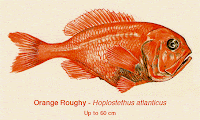In my previous post I reproduced the questions that the Chair of the negotiating group on Rules has put to WTO Delegates on the treatment that should be given to developing countries as regards new rules on fisheries subsidies.
In one of these questions, namely the second one, the Chair asks whether:
“For developing Members other than LDCs, is it appropriate and consistent with the mandate that S&D exceptions be broadest and subject to the fewest conditions for subsidies to the smallest-scale, closest to shore, and least commercial fishing operations, with exceptions becoming progressively narrower and subject to more conditions as the subsidized operations become larger-scale, further from shore, and more commercial?”
The Chair of the negotiating group, in his first draft text (WTO document TN/RL/W/213 of 23 November 2007), did already provide an answer to this question. Actually the draft agreement, taking as basis different submissions (proposals) from WTO Members, contains in Article III a number of exceptions to subsidy prohibitions for developing countries. This Article also includes a “definition” of artisanal or small-scale fisheries.
As mentioned in the title of the post, trying to find a definition of “small scale fisheries” that would satisfy everybody seems an unrealisable dream. In addition to being an unrealisable dream the quest for such a unique definition can be become a very contentious issue, especially if the possibility of giving subsidies to the fishing industry depends on such definition.
Readers will find hereunder a short bibliography on the subject of defining artisanal or small-scale fisheries:
[Berkes and Etc2002]BERKES, F. AND ETC 2002. Managing Small-Scale Fisheries: Alternative Directions and Methods. International Development Research Centre, Canada.
[Charles1989]CHARLES, A. T. 1989. Small-scale fisheries in North America: research perspectives. In La Recherche face à la pêche artisanale, Symp. Int. ORSTOM-IFREMER, Montpellier, France, pp. 3–7.
[Hauck2008]HAUCK, M. 2008. Rethinking small-scale fisheries compliance. Marine Policy 32:635–642.
[Pitcher2001]PITCHER, T. 2001. Rapfish: a rapid appraisal technique to evaluate the sustainability status of fisheries. Fisheries Research 49:255–270.
[Salas et al.2007]SALAS, S., CHUENPAGDEE, R., SEIJO, J. C., AND CHARLES, A. 2007. Challenges in the assessment and management of small-scale fisheries in Latin America and the Caribbean. Fisheries Research 87:5–16.
[Schorr2005]SCHORR, D. 2005. Artisanal fishing: Promoting poverty reduction and community development through new WTO rules on fisheries subsidies. Technical report, UNEP.
[Schorr2009]SCHORR, D. 2009. The WTO fishery subsidies negotiations: Update and introductory briefing for new delegates (fisheries subsidies and the WTO: key issues).
[Schumann and Macinko2007]SCHUMANN, S. AND MACINKO, S. 2007. Subsistence in coastal fisheries policy: What’s in a word? Marine Policy 31:706–718.
[Secretariat2005]SECRETARIAT, W. T. O. 2005. Definitions related to artisanal, small-scale and subsistence fishing (TN/RL/W/197 of 24/11/05).
[Sumaila et al.2001]SUMAILA, U. R., LIU, Y., AND TYEDMERS, P. 2001. Small versus large-scale fishing operations in the North Atlantic. Fisheries Centre Research Reports 9:28.
[Therkildsen2007]THERKILDSEN, N. 2007. Small- versus large-scale fishing operations in New England, USA. Fisheries Research 83:285–296.




